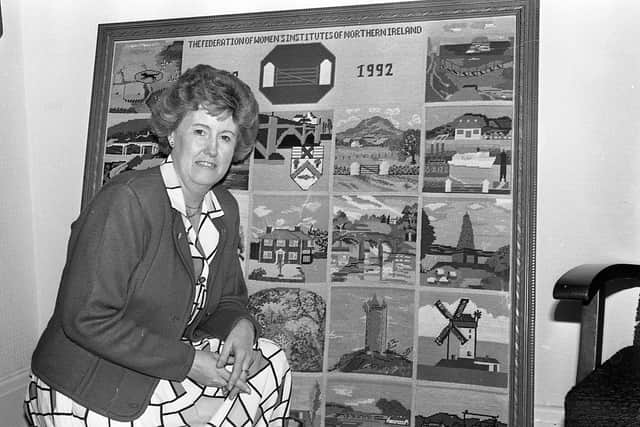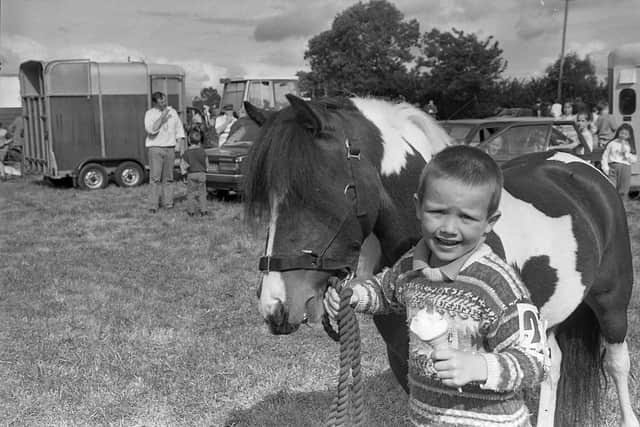A ‘great sale of Royal farm stock’ is held by the Prince Consort (1853)
and live on Freeview channel 276
The first, published in the News Letter on October 21, 1853, and which had come via The Times in London, carried a fascinating report under the headline of “Great sale of Royal Farm Stock”. It detailed: “On Tuesday the annual selection of livestock, the property of his Royal Highness the Prince Consort, was sold by auction, at Norfolk Farm, by Messrs Buckland and Son, and attracted a large attendance of butchers, graziers, and others. First in order of sale were the pigs which realised very high prices, comparatively small hogs making from £3 to £6 each. A young boar, of the Windsor breed, was knocked down for £4 8s. One or two breeding sows also fetched £5 17s 6d each. The pigs realised altogether nearly £200, the principal purchasers being Messrs Agar, Rubie, and Hole, of Windsor.”
The report continued: “The sheep consisted of 420 fat South Downs, 230 home-bred ewes and lambs, with several rams. The whole were disposed of at good but not exorbitant prices, the principal purchasers being Mr Minton, of Windsor, and the leading butchers of the neighbourhood.”
Advertisement
Advertisement
The report then turned its attention to the Royal cattle which were sold. It detailed: “The cattle consisted of a remarkably fine Hereford ox, intended for the Smithfield show, 81 superior fat oxen and heifers, 10 fine Shorthorns, fit for stalling, 19 steers and heifers, six Shorthorn heifers and cows, and two pure-bred young bulls. The dairy cows ranged from £14 15s to £16 10s, the fat cows and heifers from £15 to £22 10s. The Hereford ox (fed on cake and meal) was really a splendid animal, and realised the large sum of £46, Mr Ratcliffe, butcher, of Illingdon, being the purchaser. The fat Shorthorned oxen varied from £18 10s to £28 each, the five-year-old Scots from £15 to £17, and the four-year-olds from £10 to £12 10s. The fat Devons ranged from £17 to £24 10s. A two-year-old Shorthorned bull was knocked down to Mr John Hercy for £25; an Alderney bull of the same age fetched about half the money.”


The report, which had arrived in Belfast via The Times, concluded: “The total proceeds of the sale were nearly £4,000. We might add that, since last year, great improvement has been made in the yards and premises attached to Norfolk Farm, and the arrangements for the accommodation of the company were very complete.”
There were also many reports from autumn sales which had been held across Ireland.
In the edition of October, 19, 1853, the News Letter reported, via the Impartial Reporter, of the fair which had been held at Enniskillen: “This fair, held on Monday, was very largely attended. Prices of cattle were a good deal down, and some say there was no demand; others consider there was a good demand and high prices. Pigs were very popular, and told as high u a shilling a pound on the foot. There were no horses shown.”
Advertisement
Advertisement
Details were also published in the same edition of the Dungarvan monthly fair which had been held on October 13. The News Letter reported: “There was a large supply of stock at our monthly fair this day, and an advance has taken place since our last. Dairy stock was bought very briskly. New milk cows fetched from £10 to £12; yearlings and two-year-old heifers were not in much demand; fat cows, from £11 to £13, and some fetched £15; fat sheep, from 43s to 44s; lambs, from 23s to 25s each; bacon pigs were in quick demand, and sold at 50s per cwt: stores, from 45s to 50s.”


In the same edition that carried the report on the Royal farm stock sale there was a report on a fair which had been held at Moy. It detailed: “The October fair of Moy, held on Friday last was well attended, but badly supplied with good horses. Those of inferior description could be bought considerably easier than at the fair of the month previous. There were not many horse dealers present the principal men in the trade being engaged at the great fair of Ballinasloe. The cattle fair was a very urge one. Beef cattle were scarce and very, dear; springer cows were much in request, and sold at prices unprecedented high: store cattle and calves were the reverse, being very low in price, the high value of provender at present being an inducement to sell rather than to keep stock.”
Meanwhile of the Ballibay Fair (Monaghan) it was reported: “At this fair, on the 10th inst, there was a good supply of cattle, but the demand was not so brisk, nor did they bring the high prices of late fairs. Good milch cows kept up their former high rates. There was a good supply of horses, which sold at very low prices. Pigs fell greatly in value. There was a very large number of sheep forward, which sold at very low figures.”